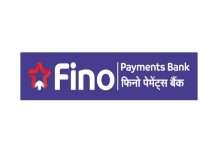Financial Liberalization refers to the removal of government intervention from financial markets as per the Policy in Bangladesh. Analysts have said that Financial Liberalization encourages investments in the market. In the case of Bangladesh, it is seen just because of Financial Liberalization. There is a massive cash inflow, and many people are eager to send money to Bangladesh for different reasons.
Table of Contents
The Start of Financial Liberalization of Bangladesh:
Since the late 1980s, Bangladesh has begun Financial Liberalization. The consequences of financial Liberalization in Bangladesh are questionable, just like many other underdeveloped countries. Bangladeshi diaspora contributed a lot to the country’s financial Liberalization as they used to send a lot of money to Bangladesh through proper channels to contribute to the foreign currency reserves.
What is Bangladesh’s Performance under Financial Liberalization?
Bangladesh has been doing a variety of things for the last two decades to integrate its market with the rest of the world in order to achieve rapid economic development. Measures were implemented in the external sector to stimulate higher investment, facilitate exports, reduce the balance of trade deficits, and boost the domestic currency. The effect of external reform initiatives is not, in reality, easy to recognize, particularly in an environment in which the reform process began some 20 years ago.
As per the Policy in Bangladesh, various economic measures still show that macro-economic shifts in the post-reform era make a difference in comparison to pre-reform patterns. It is also possible to analyze whether, following the external sector financial liberalized steps, conditions have changed or not.
What is The Impact of Financial Liberalization?
The financial reform system in Bangladesh is gradually deepened. Financial Liberalization opened the door to fruitful prospects for investors to access adequate capital at reasonable rates. Theoretically, higher real interest rates of balance can be related to better investments and higher capital returns, which in turn stimulates higher economic growth.
The rates of return for savers are increased by financial Liberalization, with the volume of intermediation projected to rise in the long term. Financial assets and deepening financial capital typically increase as a result of a liberalized interest rate and new financial instruments introduced. The financial sector’s reform is generally related to increased financial growth (consumption or circulating currency, and large money as a percentage of GDP).
As peroxide by the sum of exports and imports over GDP (EXIM), trade liberalization has a positive sign during the post-reform period, implying that trade-liberalization is generally beneficial to economic growth and efficiency. Tariff reductions from about 25% to 16% in 1996, the permission of 100% foreign ownership in most economic activities are encouraging in this direction which means that Bangladesh is on the right road to success. The government can help the investors and exporters of the country by facilitating them through different networks so that they can easily receive their money online in Bangladesh.


















